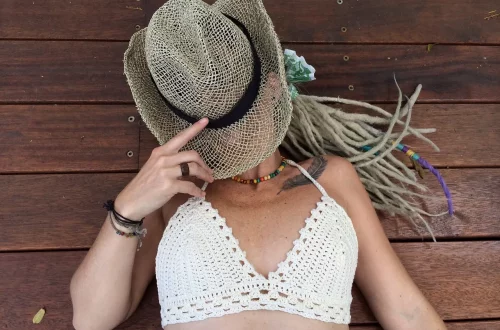
How Much Does a Pony Cost? A Comprehensive Guide for Buyers
Owning a pony can be a dream come true for many families, but it’s essential to understand the financial implications before making such a significant commitment. The cost of a pony extends far beyond the initial purchase price, encompassing various factors such as ongoing care, food, equipment, and veterinary expenses. Additionally, the costs can vary widely based on the pony’s breed, age, and training level, as well as the owner’s location and intended use for the animal.
When considering bringing a pony into your life, it’s vital to think about whether a pony fits into your lifestyle, budget, and family dynamics. Many potential pony owners underestimate the responsibilities that come with caring for these animals, often leading to unforeseen expenses and challenges. Understanding the full scope of costs associated with pony ownership will help you make informed decisions and prepare for the journey ahead. This article delves into the key financial aspects of owning a pony, providing a comprehensive overview for prospective buyers.
Initial Purchase Price
The initial cost of purchasing a pony can vary significantly based on various factors. On average, a pony can cost anywhere from a few hundred to several thousand dollars. Factors influencing the price include the pony’s breed, age, training, and overall health. For instance, a well-trained show pony can command a higher price than a younger, untrained pony.
Breeds such as Welsh, Connemara, and Shetland ponies are popular choices for families and can come with varying price tags. A well-bred, registered pony from a reputable breeder is likely to be on the higher end of the price spectrum. Conversely, adopting a pony from a rescue organization might cost less, but potential owners should consider the health and training needs of these animals.
In addition to breed and training, age plays a crucial role in pricing. Younger ponies may be less expensive but require more time and resources for training and care. Older ponies, especially those with a proven track record in competitions, may be more costly but can offer immediate riding experiences for children.
Before making a purchase, it’s advisable to conduct thorough research and potentially consult with professionals to ensure that you’re making a sound investment. Understanding the nuances of pricing in relation to the pony’s attributes will help you set a realistic budget for your initial purchase.
Ongoing Care and Expenses
Once you’ve purchased a pony, the costs don’t stop there. Ongoing care is a significant aspect of pony ownership, and it’s crucial to budget for routine expenses. These expenses typically include feed, hay, bedding, and other supplies necessary for daily care. Depending on the pony’s size and dietary needs, monthly feed costs can range from $100 to $300.
In addition to food, regular veterinary care is essential for maintaining a pony’s health. Routine check-ups, vaccinations, and dental care are critical components of a pony’s healthcare regimen. These veterinary expenses can add up quickly, with annual costs potentially reaching $500 to $1,000 or more, depending on the pony’s specific needs and any unexpected health issues that may arise.
Farrier services should also be factored into your budget. Regular hoof care is essential, and ponies typically require trimming or shoeing every six to eight weeks. Farrier costs can vary, but you can expect to pay between $30 and $150 per visit, depending on whether the pony needs just a trim or full shoes.
Additionally, consider costs related to grooming supplies, tack, and equipment. Items like saddles, bridles, and grooming kits can require a significant upfront investment, and ongoing replacement of worn-out gear should also be anticipated. Overall, when budgeting for ongoing care, it’s wise to set aside a monthly allowance to cover these routine expenses.
Training and Riding Lessons
Training is another critical aspect of pony ownership that can incur additional costs. Whether you’re looking to train the pony yourself or hire a professional, budgeting for training expenses is vital. Professional training can range from $300 to $1,000 per month, depending on the trainer’s experience and the pony’s needs.
If you’re new to pony ownership, investing in riding lessons can be beneficial for both you and your child. Lessons can help build confidence and ensure that both the rider and pony have a safe and enjoyable experience together. Riding lessons generally cost between $30 and $100 per session, so it’s essential to consider how frequently you plan to take lessons when calculating your budget.
In addition to personal lessons, consider participating in local riding clubs or organizations that offer clinics and training sessions. These opportunities can be invaluable for gaining experience and improving your skills as a rider and caretaker. However, registration fees and travel expenses to attend events should also be factored into your overall budget.
Keep in mind that the time and money you invest in training will pay off in the long run. A well-trained pony is not only safer but also more enjoyable to ride, leading to a more fulfilling experience for both the owner and the pony.
Hidden Costs of Pony Ownership
While the major expenses of pony ownership are relatively easy to identify, there are several hidden costs that potential owners should be aware of. These can include emergency veterinary care, transportation costs, and boarding fees if you cannot keep the pony at home.
Emergencies can happen unexpectedly, and having a financial cushion for unplanned veterinary expenses is crucial. It’s wise to set aside a separate fund specifically for emergencies, as these costs can vary widely based on the nature of the issue.
If you live in an area where you cannot keep your pony at home, boarding fees will be a significant ongoing expense. Boarding costs can range from $200 to $1,000 per month, depending on the services provided by the boarding facility, including feed, turnout, and care.
Transportation is another often-overlooked cost, especially if you plan to travel to shows or events. Renting a trailer or hiring a professional to transport your pony can add to your expenses.
Finally, consider the potential for wear and tear on your property, including fencing, shelters, and pastures. Maintaining a safe environment for your pony can require additional investment over time.
In summary, it’s essential to consider both the visible and hidden costs of pony ownership to prepare adequately for this rewarding but financially demanding commitment. By understanding the full scope of expenses, you can ensure that you are ready to provide the best care for your new companion.
In conclusion, owning a pony is a dream for many, but it comes with significant financial responsibilities that extend beyond the initial purchase. From ongoing care and training to hidden costs, being informed and prepared will help ensure a positive experience for both you and your pony.




